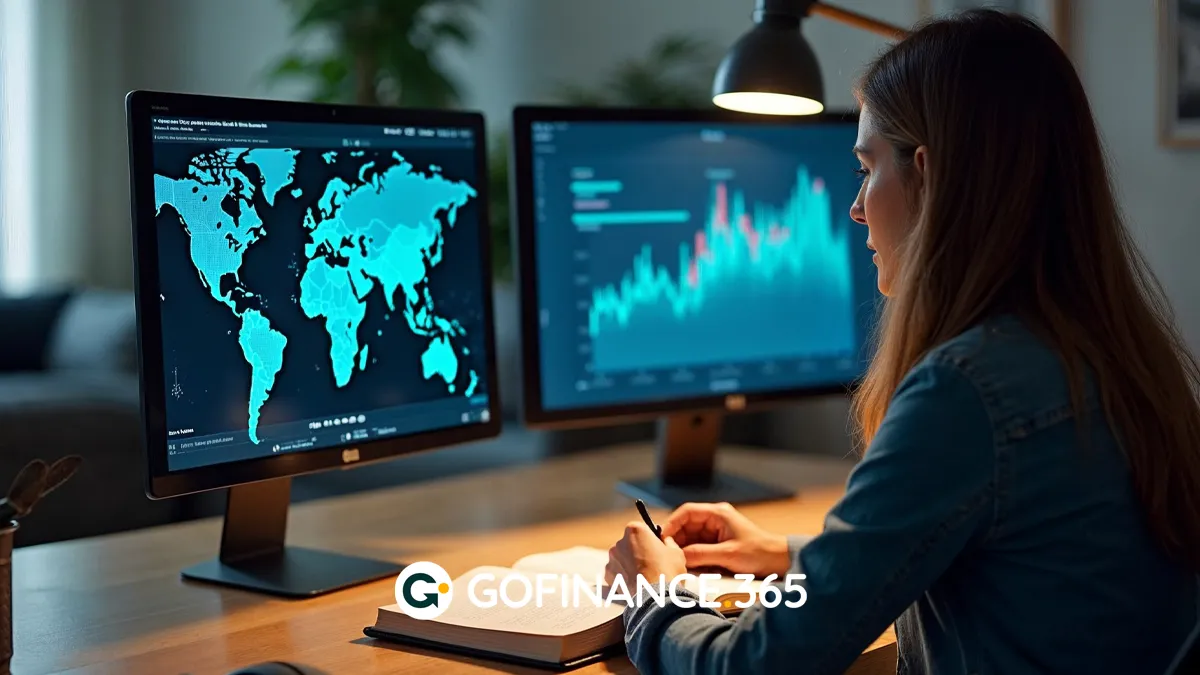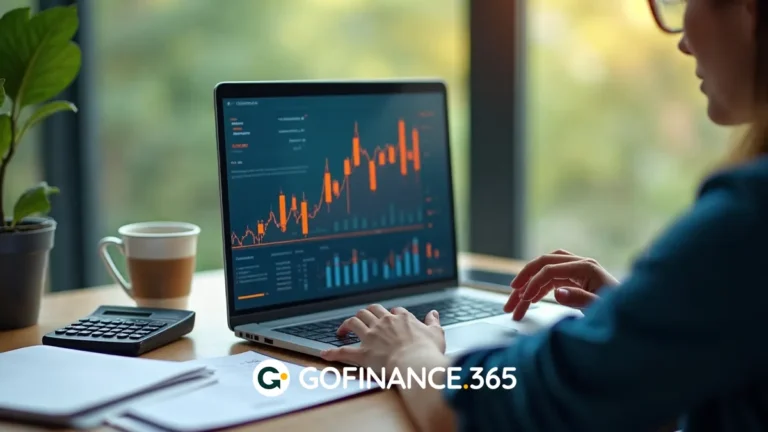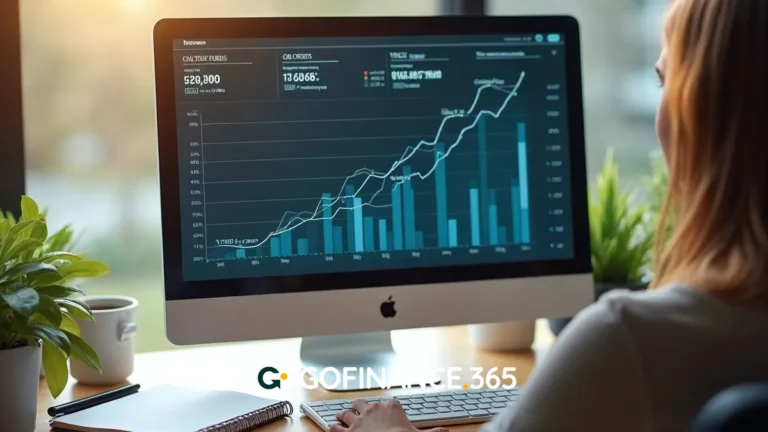Table of Contents:
Did you know that with a single ETF you can invest in thousands of companies around the world from your mobile phone and with minimal fees? This is why ETFs have become the favorite choice of beginner and expert investors alike. In this 2025 guide to ETFs for beginners, you will discover what they are, how they work, their advantages and risks, and how to take your first steps in investing safely and profitably.
If you are looking to diversify your money and grow it with discipline, this article will provide you with the knowledge and confidence to get started today.
What are ETFs and how do they work?
ETFs (Exchange Traded Funds) are investment funds that are traded on the stock market like shares and replicate an index, sector, or set of assets. When you buy an ETF, you acquire a small stake in all the companies or assets that comprise it.
This means that with a single transaction, you can diversify your investment, reducing risk and gaining access to global markets without the need for large amounts of capital or advanced knowledge.
Differences between ETFs and traditional mutual funds
Although both are investment funds, ETFs are bought and sold like stocks in real time, while mutual funds are bought at the closing price of the day. In addition, ETFs tend to have much lower fees and greater transparency, as they track public indices and their composition is known in detail.
For this reason, ETFs are ideal for those who want efficiency, flexibility, and direct control over their investment.
Types of ETFs available on the global market
There are many types of ETFs, including:
- Index ETFs: these replicate indices such as the S&P 500 or MSCI World.
- Sector ETFs: these invest in sectors such as technology, healthcare, or energy.
- Fixed income ETFs: these invest in bonds or government debt.
- Commodity ETFs: these track gold, oil, or other commodities.
- Inverse or leveraged ETFs: designed for advanced strategies, not recommended for beginners.
With this variety, you can build a diversified portfolio without large amounts of money.
Why ETFs are the best option for beginners
ETFs offer key advantages that make them the ideal tool for those new to investing who want sustainable long-term results.
Here are the main reasons why.
Instant diversification with a single purchase
An ETF allows you to invest in dozens, hundreds, or thousands of assets at once, minimizing the risk of relying on a single company. This reduces the volatility of your portfolio and gives you easy access to global markets.
For example, an MSCI World ETF gives you exposure to more than 1,500 companies in developed countries.
Low fees and tax efficiency
ETFs typically have much lower management fees than traditional funds (0.05%–0.25% per year). In addition, as they are passive funds that replicate indices, they tend to generate fewer movements and, therefore, less tax impact, optimizing your net return.
These savings in fees, over the long term, translate into thousands of dollars in additional wealth.
Flexibility to buy and sell like stocks
You can buy or sell ETFs at any time during market hours, just like a stock. This flexibility allows you to react quickly to opportunities or liquidity needs, something that other financial products do not offer.
How to start investing in ETFs from scratch
Investing in ETFs is easy if you follow a clear methodology and avoid common mistakes. Here are the essential steps to get started with confidence.
Open an account with a reliable and inexpensive online broker
Choose a regulated broker with low trading fees and no hidden costs. Brokers such as Degiro, Interactive Brokers, eToro, and Trading 212 are popular options depending on your country.
Check that they offer access to global ETFs and educational tools for beginners.
Define your goals and risk profile before investing
Before choosing an ETF, ask yourself: Why am I investing this money? What is my time horizon? And how much volatility am I willing to tolerate?
This clarity will allow you to choose ETFs that are right for you and not get carried away by fads or meaningless recommendations.
Learn how to analyze ETFs: what to look for before buying them
Always check:
- The index it tracks and its composition.
- The management fee (TER).
- Liquidity (daily trading volume).
- Whether it is accumulation (reinvests dividends) or distribution (pays dividends).
- This information will help you make informed decisions that are aligned with your financial goals.
Smart strategies for investing in ETFs with little money
With discipline and strategy, even small amounts invested in ETFs can grow significantly over the long term. Here are the most effective ones.
Regular contributions and the power of compound interest
By investing a fixed amount each month (dollar-cost averaging), you reduce the risk of entering a market peak and take advantage of long-term gains thanks to compound interest.
For example, by investing $100 per month at 8% per year, in 20 years you could have more than $55,000.
Buy & Hold Strategy: buy and hold for the long term
This strategy consists of buying ETFs and holding them for years, without trying to predict the market. This strategy reduces fees, avoids emotional mistakes, and maximizes the effect of compound interest.
It is ideal for those seeking uncomplicated wealth growth.
When to rebalance your ETF portfolio and why it is key
Review your portfolio every 6-12 months. If an ETF has grown too much and exceeds the desired percentage, sell part of it and buy other assets to maintain balance.
This rebalancing reduces risk and keeps your portfolio aligned with your profile and objectives.
Risks of ETFs and how to minimize them
Although ETFs are safe and transparent products, they are not risk-free. Understanding these risks is key to investing safely and with peace of mind.
Market risk and volatility
ETFs replicate the market and can fall in times of crisis. It is important to have a long investment horizon and not to sell out of panic during temporary declines.
Liquidity risk and how to choose liquid ETFs
An ETF with low trading volume can be difficult to sell at key moments. Always check the daily volume before investing to ensure liquidity.
Avoid complex or leveraged ETFs if you are a beginner
Inverse or leveraged ETFs multiply returns but also losses. They are not recommended for beginners, as their volatility and complexity require experience and daily monitoring.
Start investing safely in ETFs
Now that you know everything you need to know about ETFs for beginners, remember: the key is not how much you have today, but to start with discipline and consistency. With this knowledge, you can build a solid, diversified, and global financial future from your first dollar or euro invested.
Frequently asked questions about investing in ETFs
Here we will answer the most common questions so that you can invest with confidence and knowledge.
How much money do I need to invest in ETFs?
It depends on the broker, but many allow you to invest from €1/$1 if they offer fractional purchases. With €50-100/$50-100 per month, you can start building a diversified portfolio.
How many ETFs should I have in my portfolio?
For a beginner, 1-3 well-chosen ETFs are enough to diversify globally and keep management simple. As you grow, you can expand according to your goals.
Is it safe to invest in ETFs?
Yes, ETFs are regulated and transparent funds. Their main risk is market volatility, not the product itself, as long as you invest in liquid ETFs from reputable managers.















